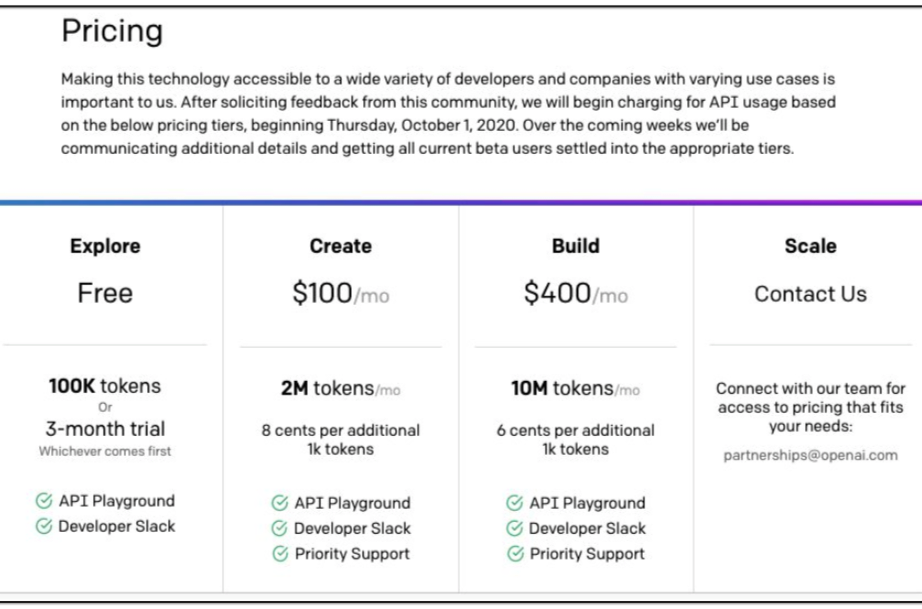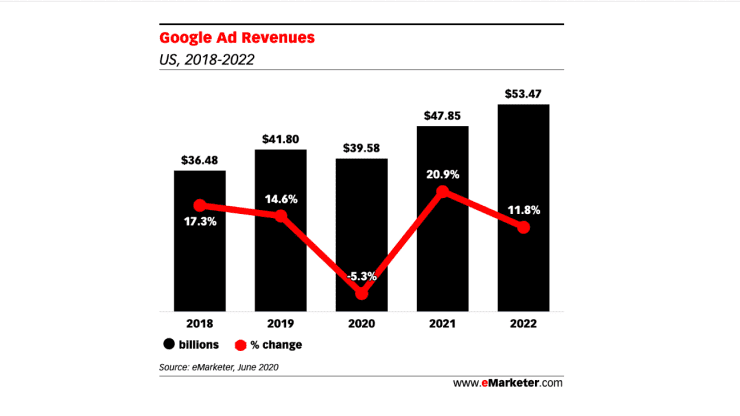- Blog Home
- Content Strategy
- Matthew Thompson
- Gpt 3 Content And The Future Of Content Marketing
GPT-3 Content and The Future of Content Marketing

When ChatGPT was publicly released at the end of November 2022, artificial intelligence (AI) finally entered the mainstream. Even now, the news is full of stories about how ChatGPT and AI are changing the world—for both good and bad. In particular, a lot of teachers have reported that students are now letting ChatGPT write their papers for them.
For those working in content marketing, these concerns were nothing new. ChatGPT’s older and more capable sibling, GPT-3, has been making waves in the content creation industry for years. With its ability to quickly generate hundreds of words worth of content, some tech observers have predicted the death of copywriting as a profession.
But can a computer really replace human-developed content? Is AI advanced enough to connect with humans intellectually, like the best writers do? There are strong opinions on both sides. Some dismiss AI-content generators outright, while others are sure that AI writing tools and apps will make human writers a thing of the past.
Naturally, the truth lies somewhere in the middle. Here’s what you need to know to approach the topic from an informed position that keeps your marketing strategies on a successful trajectory.
First Things First: What Is GPT-3?
GPT-3 stands for “generative pre-trained transformer 3.” It’s the third and most recent version, which OpenAI released in June 2020.
OpenAI has put a tremendous amount of resources into GPT-3’s development. Its algorithm relies on 175 billion machine learning parameters to generate grammatically correct, meaningful text.
The technologies behind the algorithm are natural language processing (NLP) and deep learning. In essence, these AI models enable computers to start with a pre-programmed set of knowledge and apply context to data it learns after that.
So while it's old news for a computer program to contain an entire English dictionary and be programmed with the rules of grammar, NLP allows AI to understand the language in the ways that humans actually use it (the context). Deep learning is an AI methodology that teaches programs to interpret data in ways similar to the human brain. In this case, the “brain” is known as a neural network—a series of algorithms for recognizing patterns and relationships like humans do.
The end result is text that sounds less like it was generated by a robot and more like human-written words. ChatGPT went viral by taking this technology to a conversational mode.You can ask ChatGPT almost any question and get a response that may not sound like chatting with your friends and family, but it does sound awfully close to talking to a human.
For the most part, GPT-3 and ChatGPT seem to reproduce English grammar reliably. But whether they produce reliable and meaningful content isn’t as certain.
The “Accuracy” of ChatGPT
To get an idea of how good GPT-generated content can sound, while still being unreliable when it counts, consider this “interview” with ChatGPT conducted by journalist Ray Kelly.
Kelly runs Wellesnet, a fan website dedicated to the late actor and director Orson Welles. In early 2023, he tested ChatGPT’s capabilities by asking the chatbot a few questions about Welles’s career.
A lot of ChatGPT’s answers were accurate and informative. When asked about Welles’s legacy, the AI responded several well-formed sentences and properly identified the film that Welles is most remembered for:
Welles is best known for his debut film Citizen Kane (1941), which is widely considered one of the greatest films ever made. The film’s innovative use of non-linear storytelling, deep focus photography, and striking visual style set new standards for filmmaking and made Welles an instant sensation in Hollywood.
But when later asked what happened to Welles post-Citizen Kane career, ChatGPT started to show its limitations:
After the enormous success of Citizen Kane (1941), his first film as a director, Welles struggled to get his next projects off the ground.
This answer seems reasonable enough. But there was no need to repeat the year the film was made when bringing it up again. Doing so makes the text feel a bit robotic. And although Citizen Kane is indeed now recognized as an “enormous success,” it was a box office flop in its initial release. It took decades before the film earned unanimous praise from audiences and critics.
When asked about Welles’s final film as a director, The Other Side of the Wind, ChatGPT makes a major blunder. Welles started shooting Wind in 1970, but a complicated series of events extended the production all the way to 1976. When Welles died in 1985, the film was unedited and unreleased. The project stayed in limbo until Netflix funded its completion and released it in 2018. Yet, ChatGPT contends that Welles finished the film shortly before dying:
The Other Side of the Wind is a film directed, co-written, and co-produced by Orson Welles. The filming of the movie began in 1970 and was not completed until shortly before Welles’ death in 1985.
These brief snippets of a short ChatGPT conversation show both the promise and the limitations of AI-generated content. The language model is clearly working. ChatGPT sounds like an educated observer of the great film director’s career. But its accuracy is lacking in a way that no serious business could excuse.
Does GPT-3 Create “Black Hat” SEO Content?
In terms of SEO content creation, some of the same problems can pop up in GPT-3 content.
GPT-3 often sounds more like a politician trying to evade a direct answer. No reasonable reader would find the answer fulfilling or meaningful in any true sense. It’s an impressive technological achievement, but it does not match the useful, engaging content that content marketers use to improve brand recognition, generate leads, and increase conversions.
Search engines have always struggled to prevent black hat SEO content from manipulating their algorithms. Some content marketing experts wonder whether the content generated by GPT-3 falls into the same black hat category as strategies like:
-
Keyword stuffing that uses trending keywords without providing relevant content.
-
Cloaking that attempts to show different content to search engines than readers, making it hard for search engine crawlers to identify spam content.
-
Private link networks that make websites seem more important than they really are.
-
Low-quality articles from content mills that often include inaccurate information, grammatical errors, poor organization, and content stolen from other sites.
For the most part, it doesn’t seem like GPT-3 content counts as a black hat strategy. However, search engines like Google may not care about a nuanced difference between black hat techniques and AI-generated content. If content doesn’t meet a user’s needs, search engines will look for ways to identify it and lower its ranking. The search engines likely will not care who wrote the content. They will continue to put the users' needs above those of marketing professionals. Content marketers will need to find a way to adapt.
Can Content Marketing Professionals Save Money With GPT-3 Content?
OpenAI will let anyone use its API to access GPT-3—although the company currently has a long waiting list . AI has an incredibly low price for those who manage to connect with the company. Some time ago, OpenAI announced that it would charge $100 per month for Create memberships and $400 per month for Build members.
The Create membership includes:
-
API playground
-
Developer Slack
-
Priority support
-
Two million tokens
Members can buy additional tokens for $0.08 per 100,000.
A Build membership gives you the same features, but you get 10 million tokens and the option to purchase 1,000 additional tokens for $0.06.
Companies interested in trying GPT-3 can sign up for free Explore memberships that give them access to the API playground and Developer Slack. The free membership comes with 100,000 tokens or three months of use, whichever comes first.
Enterprise users can contact OpenAI for Scale pricing catered to their needs. At just $100 per month, many content marketers will feel tempted to rely on OpenAI’s GPT-3 pricing plans. Those on a really strict budget could even be swayed by free and open source GPT clones with an unproven track record.
GPT-3 Prices vs. Low-Quality Content Prices
Content mills already sell low-quality content at shockingly low prices. You can find content that costs as little as $20 per 1,000 words—just $0.02 per word.
It’s worth noting that experienced content marketers know not to rely on content mills. You can purchase a lot of content without spending much money, but you will not get the results you can expect from content written by professionals focused on quality and reader engagement.
A low-cost piece of content might include the keywords you want, but it will not attract backlinks or boost social media shares. When readers encounter poorly written, unuseful content, they usually leave the pages within seconds. As more readers retreat from unhelpful pages, websites experience higher bounce rates that can damage their reputations. In other words, low-cost, low-quality content does more harm than good.
GPT-3’s AI-generated content currently has a higher upfront cost than some content mills. Eventually, that should change. Over time, OpenAI will give more users free access to GPT-3. When that happens, you can generate content for the amount of money it costs to power a computer. Hypothetically, you could create content for pennies.
GPT-3 Could Eliminate Low-Quality Content Mills
Given the low quality content produced by content mills, GPT-3 doesn’t have to accomplish much to outperform them. GPT-3 has already shown that it can generate readable content. It doesn’t do a great job connecting with readers, but it offers grammatically correct text that can include keywords and topic-specific information pulled from reliable sources.
When you purchase low-tier articles from content mills, you often get content written by people who don’t speak English as their first language. The companies think more about reaching word counts than quality, so they will hire practically anyone with access to a computer. As long as writers don’t expect to get paid much, they can find jobs churning out unhelpful content.
As GPT-3 becomes increasingly affordable, it could eliminate low-quality content mills. It will make more sense for content marketers to spend less money on GPT-3-generated content than pay content mills. As long as the content from GPT-3 costs less than content from inexperienced writers, enough marketers will choose it that forces content mills to go out of business or improve the quality of their work.
As cheaper alternatives become accessible, website developers and marketing professionals will abandon low-quality content mills for AI and high-quality content written by professionals.
Low Costs Could Backfire for GPT-3
Does the low cost of GPT-3 content sound too good to be true? An experienced content marketer might already see some looming problems with extremely cheap, AI-generated content.
The first problem is that black hat SEO strategists will try to use GPT-3 to their benefit. They will find the inexpensive, straightforward approach to content development irresistible.
Unfortunately, that will lead to them spamming the internet with massive volumes of blog posts that don’t offer readers unique information. With AI, publishers can produce 1,000 pieces of content with just enough variety to avoid detection from Google’s current algorithm.
The second problem is that other companies will develop AI that competes with GPT-3. Suddenly, black hat SEO spammers will find themselves in a race to the bottom.
Content marketers that continue using high-quality content won’t experience many problems as AI tries to disrupt the industry. These marketers already avoid low-quality content that doesn’t drive results. They only want content that can reliably:
-
Improve brand awareness
-
Increase traffic to websites and landing pages
-
Boost lead generation and conversions
-
Reach a wider audience of readers
-
Get shared by readers via social media
-
Attract attention from other websites that want to cite authoritative articles
If AI content can’t meet these expectations and won't for years or decades—the best content marketers will not use it. It doesn’t matter how cheap AI-generated content becomes. If it doesn’t reach the objectives listed above, professional marketers will not waste so much as a dollar on it.
GPT-3 promises low prices and adequate content. It may fill the void left by content mills that go out of business, but it will not significantly influence professional content marketing. It could even have the opposite effect of driving more marketers away from low-cost, low-quality content developers to professional writers that can add a human touch to their blog and social media posts.
Google Will Likely Penalize GPT-3 Content
Google’s continued success as a search engine and advertising depend on its ability to connect internet users with useful content. The company never divulges exactly how its algorithms work, but what they do publicly say about its August 2022 “helpful content” update to the algorithm implies it will penalize AI-generated content in search results.
Does it sound impossible for Google to create an algorithm that identifies GPT-3 content? Keep a few things in mind:
-
OpenAI is a non-profit largely funded by tech CEOs who have an interest in Google’s success.
-
Alphabet, Google’s parent company, is worth about $1 trillion, giving it more than enough money to invest in its own AI.
-
OpenAI lets anyone access the GPT-3 source code, so Google engineers could use that to develop a tool that learns how to spot GPT-3 content.
The current version of GPT doesn’t generate text that would fool advanced readers. A future version could, though. There’s a significant difference between fooling a human reader and confusing Google’s web crawlers.
Google can look at content from a great distance, making it possible to spot markers that appear in AI-created content. You might have to read millions of pages to see what those identifying features look like. People can’t do it, but Google can.
Assuming that Google has any financial interest in penalizing AI-generated content, it will find a way to flag suspicious pages. If a machine can generate it, then a machine can flag it.
Also keep in mind that Google is also slowly rolling out Bard, its ChatGPT competitor. The future success or failure of this product will likely shape Google’s overall opinion on content automation. For now, it’s all up in the air.
AI Will Not Replace Professional Writers Anytime Soon
Any marketing professionals looking forward to the day that AI can produce cheap, useful content shouldn’t have much faith that the technology will reach them anytime soon. GPT-3 does a fantastic job and comes close, but its content doesn’t have any intelligence behind it.
In fact, GPT-3 and its predecessor, GPT-2, have already demonstrated the problem with publishing content written without a human mind behind it. Machine learning, an essential component of AI, can only produce text based on the information it has. When you connect AI to the internet, it can draw on biased content that taints its content. Researchers have already found examples of this in GPT-3’s work.
Some of the bias that comes through GPT-3’s text includes:
-
Placing sexualized terms closer to female pronouns than male pronouns.
-
Connecting Islam to terrorism while oddly relating atheism with “cool” and “correct.”
-
A negative outlook on text involving Black people rather than White and Asian people.
Anyone willing to let GPT-3 create content opens themselves to legal and reputational risks.
At best, they would need a human editor willing to sort through all the content. Once you add human editors, you automatically lose many of the cost and time advantages you want from AI.
Summary of GPT-3 Content Pros and Cons
GPT-3 content could have positive and negative effects on the future of content marketing. Marketers that already rely on high-quality content probably don’t have much to worry about. It will take a long time before a future version of GPT can come close to duplicating the kind of insight that human writers include in their content. Still, you should know all the potential pros and cons to make sure you prepare.
Potential Pros of GPT-3 Content
The potential pros of GPT-3 content include:
-
A price war between AI and low-quality content mills that eventually forces content mills out of business.
-
A low-cost way to create generic content that plays a relatively small role in the success of content marketing campaigns.
-
An improved Google algorithm that demands excellent quality and useful information from every piece of content.
-
An increased commitment to quality content that connects with human readers.
Potential Drawbacks of GPT-3 Content
The potential drawbacks of using AI-generated content include:
-
Messages that fail to connect with consumers.
-
Black hat SEO practices that lower the overall quality of online content.
-
Rampant content spinning that makes it more difficult for serious marketers to reach their audiences with original, influential messages.
-
A bias that puts brands at risk.
-
Search engine flags that hurt page rankings.
In the end, it’s safe to say that GPT-3 and other AI currently has limited potential for high-ranking, quality SEO content. The trained language model might produce reliable content in some small use cases, like product descriptions, writing tweets, or creating Wikipedia entries. More long-form content requires a better dataset and more trained language content before AI can be a serious part of your content strategy.
Improve Your Content Marketing Strategy by Hiring Professional Writers on Scripted—100% Guaranteed Human!
AI Content With an Expert Touch—Powered by Scripted!
Don’t expect GPT-3 to solve your content needs. Human writers who take time to research topics, nurture leads, and connect with audiences will always do a better job than computers can. If you wait for technology to reach the capabilities of professional writers, you will probably spend more than a decade betting on a lost cause.
There’s no doubt that businesses are going to start publishing AI-generated content. In some cases, it will be very obvious when this content will be when content has been AI generated, if not explicitly stated as such. This will then, in turn, create a demand for content created with human expertise. The challenge for those human writers will then be keeping up with the pace of publishing while still adding human expertise.
The best strategy right now is to use the AI tools for research and to build a baseline for the content. Expert writers, like our team at Scripted, can then shape the content into professional, SEO-friendly work faster.
AI + Human Expertise Content
In a world where we all continue to get spammed with AI content, content distribution platforms like Google, LinkedIn, and social media sites set the bar higher than AI-only content. To keep up with the rise in content and stand out, your business needs more than just human-written content while keeping the work accurate, professional, and optimized for search engines.
The combination of human and AI content will stand out the most. You need to find the right team to master the formula of “AI + Human Content.” To do that, have a look at what Scripted offers.
Scripted gives you all the content you need to grow your brand, increase traffic to your website, and convert visitors into paying customers. The writers on Scripted’s platforms have been carefully vetted to ensure you get professional content that helps your marketing campaigns reach their goals. Every writer must pass tests and submit writing samples that our staff reviews. Only about 2 percent of writers get invited to join the platform.
Scripted gives you complete control over who you hire. Every writer profile includes writing samples, a reliability score, and client reviews. You can search for writers with experience in your industry, browse their profiles, and choose the people you like best. You can also be confident your writer, editor, and account manager are using the latest tools to make your content stand out.
If you want a hands-off approach to successful content marketing,Scirpteds Enterprise Package includes:
-
A dedicated account manager.
-
A content marketing strategy based on keyword research and tested SEO.
-
Content ideas and creation from Scripted’s top writers.
-
Analytics and reporting that show the effects of your content marketing.
-
Human expertise with the speed of AI
And if you are in the tech world, you can browse our real-life human technology writers (like the one who wrote this article) to write for your website.




